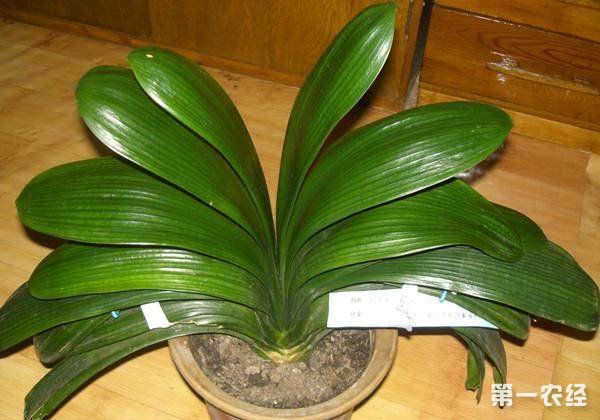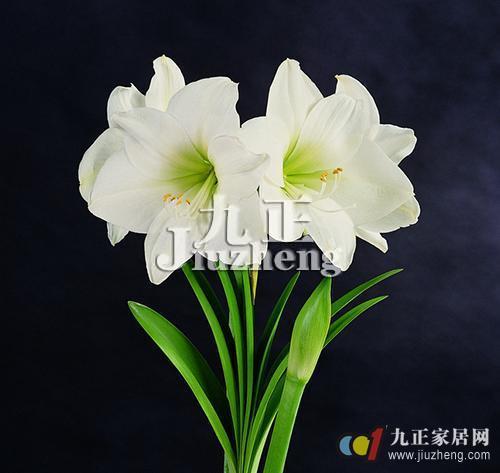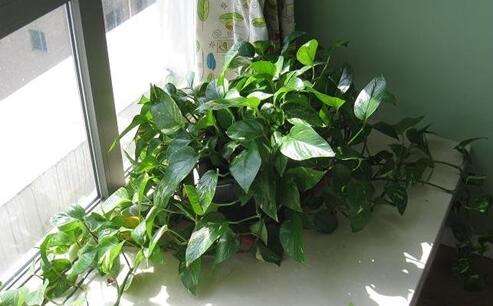Why doesn't adult gentleman orchid blossom?
Magnolia usually needs to grow more than 15 leaves after 3-4 years of cultivation before it can bloom. Those who have not reached the flowering age will not blossom no matter how carefully maintained. So what is the reason why adult gentleman orchids sometimes do not bloom? The main reasons are as follows:
1. The growth of Cymbidium was inhibited when the room temperature was low in winter. In view of this situation, the room temperature in winter must be kept at about 15 ℃, and the minimum must not be less than 10% before the orchid can bloom.
two。 The gentleman orchid accepts short sunshine, which is beneficial to flowering. If the sunlight is too strong in summer, the plant will consume too much nutrients and affect the budding and flowering. Therefore, in the summer, to put it in the semi-shade to avoid direct sunlight. In winter, magnolia must have a certain amount of light, otherwise it will affect its flowering.
3. In maintenance, too much nitrogen fertilizer but lack of phosphorus and potassium fertilizer will only grow leaves but not blossom; too much or too little watering will also affect the normal growth and development of the plant and affect the bud blooming. Therefore, the adult Magnolia should be applied more phosphorus and potassium fertilizer every half a month, and less nitrogen fertilizer during the growing period. Watering should be timely and appropriate.
4. The basin soil is lack of nutrition. The orchid consumes a lot of nutrients in the flowering process, and there is not much nutrients left in the potted soil, so it will be very difficult if we do not apply fertilizer or add new culture soil to let it continue to grow leaves and blossom. Even if it blossoms, the flowers are often thin and small, the color becomes lighter, and the ornamental value is not high. In addition, when the potted soil is too alkaline and the pH is more than 7.5, it will also affect the growth and flowering of Cymbidium. In order to make the orchid blossom year after year, the flowering plants should be changed at the right time to change the pot and soil, and strengthen the management of water and fertilizer to make it grow healthily, so that it can blossom again.
Why don't magnolia blossom? What if the orchid doesn't blossom?

The magnolia does not blossom.
Flower friends often ask why your gentleman orchids bloom so beautifully, I have no movement at all! I have raised it for 3 or 4 years, and I should be an adult. Why is this so?
In fact, after entering adulthood from childhood, magnolia should generally blossom. It is said that the 4-year-old magnolia has entered adulthood and generally has about 20 leaves, that is, it should draw arrows and blossom. Some people maintain very well, the plant grows healthily, develops well, and can blossom for 2 ~ 3 years. However, some gentleman orchids are nearly old and have never blossomed, and some have occasionally blossomed once in a while, and then they are cut off from the flowers, so why does your gentleman orchid not blossom? it may be that these four points have not been done well:
1. Temperature
When the room temperature is low in winter, the growth of Cymbidium will be inhibited. In view of this situation, the room temperature in winter must be kept at about 15 ℃, and the lowest must not be less than 10 ℃ before the orchid can bloom.
2. Lighting
The orchid receives short sunshine, which is conducive to flowering; long sunshine will make the plant consume too much nutrients and affect the blooming of pregnant buds. Therefore, in the summer, put the gentleman orchid in the semi-shade to avoid direct sunlight. In winter, magnolia must have a certain amount of light, otherwise it will affect the flowering.
3. Fertilization
In the growing period, the orchid should apply more phosphorus and potassium fertilizer, once every half month, and less nitrogen fertilizer, otherwise it will only grow leaves and will not blossom.
4. Watering
Cymbidium is a fleshy root and should be planted in sandy loam with good permeability. Therefore, to control the amount of watering in winter, we only need to keep the basin soil moist, not to water more, and not to let the basin soil accumulate water, so as to avoid rotting roots.
Do a good job at the above 4 points, your adult gentleman orchid will basically be able to blossom beautiful flowers, so we should have confidence and patience!
Why don't magnolia blossom? And the maintenance measures to make the orchid blossom.
The gentleman orchid is a kind of precious flower, which is full of noble meaning. With high ornamental value, Cymbidium is particularly beautiful during the flowering period, but some flower friends reflect that the orchids they plant do not bloom. What is the reason why orchids do not blossom, and how to maintain them to make them blossom?
Reason
There are many reasons why the orchid does not blossom in adulthood. First, it does not change the soil for a long time, and there is a serious lack of phosphate fertilizer and other elements in the soil. Second, rotten roots cause malnutrition and lead to non-flowering. Third, there is a drought and lack of water, which leads to non-flowering.
Measure
Fertilization: bone meal, fermented fish viscera and bean cake water should be added to make the flowers bright, increase the flowers and thicken the leaves. Otherwise, it is easy to appear the phenomenon of small flowers, small number and light color. At the same time, attention should be paid to avoid excessive application of nitrogen fertilizer and insufficient phosphorus and potassium fertilizer, resulting in weak growth or excessive growth of leaves, affecting budding and flowering.
Lighting: certain light conditions should be given to meet the light requirements of photosynthesis and flowering. In strong light, the florescence is short and the flower color is bright; in low light, the flower color is light. Too long, too strong or long-term shade, lack of light, all affect the production and accumulation of nutrients, so that it can not bud and blossom.
Temperature: the suitable temperature has an obvious effect on the flowering effect. When the temperature is too high, the root hair exists for a very short time, and the function of absorbing water and fertilizer is greatly reduced, which makes the orchid show a semi-dormant state; the temperature below 10 ℃ will also inhibit the growth; the flowering period should be 15-20 ℃. The root hair exists for a long time, the function of absorbing water and fertilizer is good, the leaves grow short and wide, and the flowers are luxuriant.
Moisture: Cymbidium can not be short of water during the whole plant growth period, and the water requirement at flowering stage is greater, and the growth humidity is not less than 60%.
The above is what I have sorted out for you about the magnolia. If you want to know more, please continue to pay attention to the succulent flower bed, we will provide you with more knowledge.
- Prev

How to control common diseases and insect pests of Magnolia
Common diseases of Cymbidium and their control methods: 1. Soft rot: also known as rot disease, wiping head disease and so on. Most of them occur on the lower leaves, and at the beginning, the disease spots show dark green water stains, and then the disease spots spread into pieces, and the diseased leaves rot and become soft and droop, spreading to the root system, resulting in the lodging of the whole plant and the shedding of the heart leaves.
- Next

How to grow green leaves.
Microphylla green distemper originated in tropical rain forest, node on the birth of several thin purple aerial roots, it is easy to carry out hydroponics. (1)As long as the temperature is above 20℃, the stem segments with good ornamental effect can be cut and directly inserted into clear water at a depth of 5.0~10 cm.
Related
- Fuxing push coffee new agricultural production and marketing class: lack of small-scale processing plants
- Jujube rice field leisure farm deep ploughing Yilan for five years to create a space for organic food and play
- Nongyu Farm-A trial of organic papaya for brave women with advanced technology
- Four points for attention in the prevention and control of diseases and insect pests of edible fungi
- How to add nutrient solution to Edible Fungi
- Is there any good way to control edible fungus mites?
- Open Inoculation Technology of Edible Fungi
- Is there any clever way to use fertilizer for edible fungus in winter?
- What agents are used to kill the pathogens of edible fungi in the mushroom shed?
- Rapid drying of Edible Fungi

